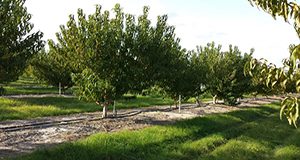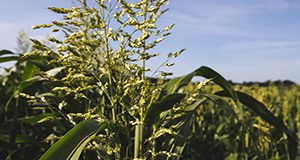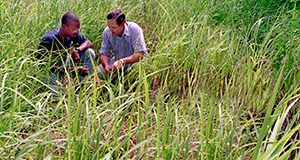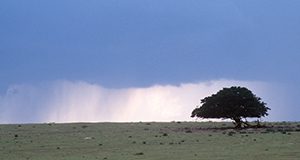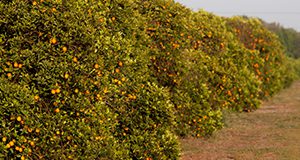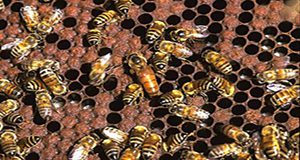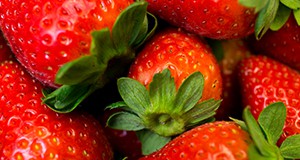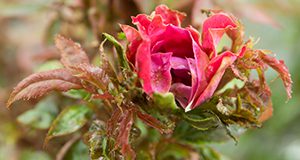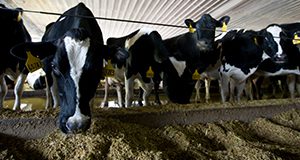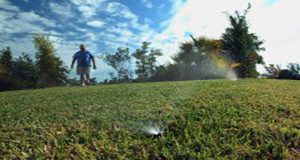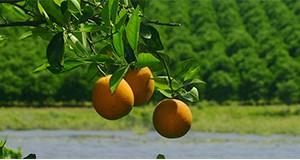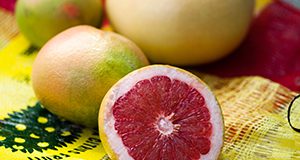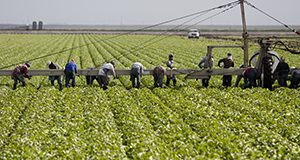
The Immigration and Nationality Act (INA) of 1952 authorized a nonimmigrant visa category, known as H-2, for foreign agricultural and nonagricultural workers to come to the United States and perform temporary services. To protect against disruptions in the farm labor supply, many growers are turning to the H-2A program to import foreign guest workers. This 5-page fact sheet written by Berdikul Qushim, Zhengfei Guan, and Fritz M. Roka and published by the UF/IFAS Food and Resource Economics Department explains the H-2A program and briefly discusses immigration reform.
http://edis.ifas.ufl.edu/fe1029
Category: Agriculture
An Overview of the US Bell Pepper Industry
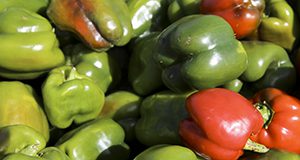
Bell pepper is one of the most widely cultivated vegetable crops in the world; it is widely grown all over the United States, and production of bell pepper has been a major economic contribution to the vegetable industry in Florida and California. This 4-page fact sheet written by Trina Biswas, Zhengfei Guan, and Feng Wu and published by the UF/IFAS Food and Resource Economics Department provides an overview of the US bell pepper industry, including production, prices, and trade.
http://edis.ifas.ufl.edu/fe1028
The US Tomato Industry: An Overview of Production and Trade
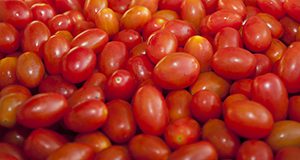
Tomatoes are one of the world's most consumed vegetable crops. In the United States, domestic production meets about 40% of the total domestic demand for fresh-market tomatoes, with the rest of the demand met by imports, mostly from Mexico and Canada. Since 2000, however, fresh tomato production in the United States has exhibited a steady declining trend. One major reason is the increased competition from Mexico. This 4-page fact sheet written by Zhengfei guan, Trina Biswas, and Feng Wu and published by the UF/IFAS Food and Resource Economics Department argues for US government measures to help the domestic tomato industry resolve labor shortages and encourage research and development of labor-saving technologies such as mechanical harvesting to make the US tomato industry more competitive and sustainable.
http://edis.ifas.ufl.edu/fe1027
Labor Requirements and Costs for Harvesting Tomatoes
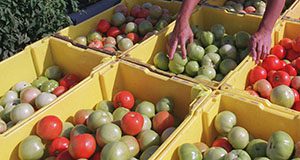
Florida accounts for 30% to 40% of all commercially produced fresh-market tomatoes in the United States. Almost every southern county in the state grows tomatoes. This 4-page fact sheet written by Zhengfei Guan, Feng Wu, and Steven Sargent and published by the UF/IFAS Food and Resource Economics Department presents the results of a 2015 study that examined the time it takes to harvest this important crop.
http://edis.ifas.ufl.edu/fe1026
Tomato Suspension Agreements and the Effects on Market Prices and Farm Revenue
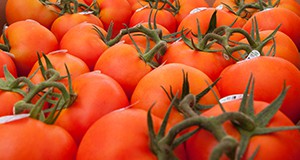
The production capacity of the US tomato industry has decreased significantly in the past decade. The US Department of Commerce and the Mexican tomato industry negotiated and signed several Suspension Agreements that set floor prices for imported Mexican fresh tomatoes to protect the US domestic industry. This 4-page article written by Zhengfei Guan, Dong Hee Suh, and Feng Wu and published by the UF/IFAS Food and Resource Economics Department provides a review of the history of the suspension agreements and an analysis of their effects on the US tomato industry.
http://edis.ifas.ufl.edu/fe1025
Irrigation Practices for Peaches in Florida
This 6-page document provides basic information and guidelines on water requirements and irrigation strategies for peaches grown in Florida. Written by C. Zambrano-Vaca, L. Zotarelli, K. Migliaccio, R. Beeson Jr., K. Morgan, J. Chaparro, and M. Olmstead and published by the UF/IFAS Horticultural Sciences Department, April 2018.
http://edis.ifas.ufl.edu/hs1316
Degree-Days: Growing, Heating, and Cooling
How much and when it rains, freezes, and thaws can make the difference between boom and bust for a year's crop. However, temperature can predict more than boom or bust. Atmospheric temperature can predict the growth rates of many plants. For this reason, growers use a concept called growing degree-days (GDD), sometimes called heat units. This 5-page document discusses growing degree-days, use of the AgroClimate website to track and forecast GDD accumulation, heating and cooling degree-days, and methods for calculating HDD, CDD, and GDD. Written by Clyde W. Fraisse and Silvana V. Paula-Moraes, and published by the UF/IFAS Department of Agricultural and Biological Engineering, revised December 2010 and April 2018.
http://edis.ifas.ufl.edu/ae428
Biology and Control of Cogongrass (Imperata cylindrica) in Southern Forests
Cogongrass (Imperata cylindrica (L.) Beauv.) is a Southeast Asian warm-season perennial grass species that has spread to all continents except Antarctica. It is considered among the worst problematic weeds on a global scale. Control of cogongrass is difficult, especially in forests. This 6-page fact sheet written by Patrick J. Minogue, Brent V. Brodbeck, and James H. Miller and published by the UF/IFAS School of Forest Resources and Conservation presents recommendations for control strategies that will work in mixed pine-hardwood forests and pine forests.
http://edis.ifas.ufl.edu/fr411
AgroClimate Crop Season Planning Tool: Reducing the Risk of Extreme Weather Events During Key Stages of Crop Development
This 5-page publication details a new tool available to growers and Extension professionals to manage risks related to climate during seasonal planning stages. The Crop Season Planning tool is a climate-based tool that enables growers to plan planting strategies that will minimize risk to climate extremes based on historical climate data at their location. Written by Caroline G. Staub, Daniel Perondi, Diego Noleto Luz Pequeno, Patrick Troy, Michael J. Mulvaney, Calvin Perry, Brian Hayes, Willingthon Pavan, and Clyde W. Fraisse, and published by the UF/IFAS Department of Agricultural and Biological Engineering, March 2018.
http://edis.ifas.ufl.edu/ae525
How Likely Is a 100-Year Rainfall Event During the Next Ten Years?
This 4-page fact sheet describes proper interpretation of rainfall event probabilities and recurrence intervals, particularly as they are used by engineers and water resources managers in the design and construction of hydraulic structures, such as dams, levees, and canals. This article focuses on rainfall, but its explanations and concepts can be applied to other extreme hydrologic phenomena such as flood and drought. Written by Young Gu Her, William Lusher, and Kati Migliaccio, and published by the UF/IFAS Department of Agricultural and Biological Engineering, March 2018.
http://edis.ifas.ufl.edu/ae523
Economic Contributions of the Florida Citrus Industry in 2015/16
This 2-page fact sheet written by Christa D. Court, Alan W. Hodges, Mohammad Rahmani, and Thomas H. Spreen and published by the UF/IFAS Food and Resource Economics Department describes the economic contributions of the citrus industry to the state of Florida in fiscal year 2015/16, updating previous studies for 2012/13 and 2014/15 and previous estimates for the economic impacts of citrus greening disease.
edis.ifas.ufl.edu/fe1021
Living with the African Honey Bee
African honey bees and European honey bees are the same species of honey bee, but the two are classified as different subspecies or races of honey bee. African honey bee x European honey bee hybrids present an unpredictable combination of both subspecies‹ behavioral traits. This 4-page fact sheet written by J. D. Ellis and M. Bammer and published by the UF/IFAS Department of Entomology and Nematology explains how to “bee-proof” your house and yard and develop a bee safety plan as well as what you can do if you encounter a swarm or a colony of bees and how to treat a bee sting.
edis.ifas.ufl.edu/in1205
Florida Strawberry Growers Need More Early Yield to Improve Profitability
Fresh strawberries are a major US fruit crop. This 3-page fact sheet written by Feng Wu, Zhengfei Guan, and Vance Whitaker and published by the UF/IFAS Food and Resource Economics Department summarizes recent research on strawberry yield patterns and how they are predicted to affect profits. It is intended primarily for those involved in Extension, marketing, policy-making, production, and research related to the Florida strawberry industry. We believe that a better understanding of yield and price dynamics will be valuable to industry decision-makers.
http://edis.ifas.ufl.edu/fe1032
Plant and Pest Diagnosis and Identification Through DDIS
Pest identification and diagnosis can be difficult and often require consultation with a specialist. Extension county faculty, state specialists, and faculty of the UF/IFAS Office of Information Technology developed the Distance Diagnostic and Identification System (DDIS), which allows users to submit digital images obtained in the field or after delivery to a local Extension office for rapid diagnosis and identification of pest insects, weeds, diseases, and animals. This 4-page document discusses typical DDIS hardware and camera, the DDIS process, sample types, user roles, DDIS for Extension clientele, and DDIS Mobile. Written by J. Xin, L. Buss, C. Harmon, P. Vergot III, M. Frank, and W. Lester, and published by the UF/IFAS Department of Agricultural and Biological Engineering, revised March 2018.
http://edis.ifas.ufl.edu/ae225
Common Hazards to Consider During Manufacturing of Feed for Beef and Dairy Cattle
This 6-page document provides a list of common hazards to consider in the manufacturing of cattle feeds. It discusses the importance of preventing hazards, methods of prevention, and common physical, biological, and chemical hazards. Written by Taylor Langford, Matthew Hersom, Luiz Ferraretto, Antonio Faciola, Chad Carr, and Jason Scheffler, and published by the UF/IFAS Department of Animal Sciences, March 2018.
http://edis.ifas.ufl.edu/an343
Calcium for Florida Turfgrasses
Calcium is the dominant cation in all soils of agronomic importance. This 3-page document will explain the function of Calcium in turfgrasses, describe situations where applications would or would not be of value in turfgrass management, and identify calcium sources. Written by T. W. Shaddox and published by the UF/IFAS Environmental Horticulture Department, March 2018.
http://edis.ifas.ufl.edu/ep554
Recruiting and Retaining Members in Agricultural Organizations
Many organizations struggle with recruiting new members and retaining current members. The UF/IFAS PIE Center conducted membership surveys of the Florida Cattlemen’s Association and Florida CattleWomen to aid both groups in their membership efforts. This 3-page document discusses common membership barriers and practices in order to help agricultural organizations be better equipped to attract new members and keep current ones. Written by Ricky Telg and published by the UF/IFAS Department of Agricultural Education and Communication, March 2018.
http://edis.ifas.ufl.edu/wc300
Cost of Production for Processed Oranges in Southwest Florida, 2016/17
This 5-page fact sheet written by Ariel Singerman and published by the UF/IFAS Food and Resource Economics Department summarizes the cost of production per acre for processed oranges grown in southwest Florida during the 2016/17 season. Typical users of the estimates include growers and consultants, who use them as a benchmark; property appraisers, who use them to compute the taxes for property owners; and researchers, who use the estimates to evaluate the economic feasibility of potential new technologies.
http://edis.ifas.ufl.edu/fe1038
Cost of Production for Fresh Market Grapefruit Grown in Indian River, Florida 2016/17
This 5-page fact sheet written by Ariel Singerman and published by the UF/IFAS Food and Resource Economics Department presents the cost of production per acre for growing fresh grapefruit in the Indian River region during 2016/17. Typical users of the estimates include growers and consultants, who use them as a benchmark; property appraisers, who use them to compute the taxes for property owners; and researchers, who use the estimates to evaluate the economic feasibility of potential new technologies.
http://edis.ifas.ufl.edu/fe1037
Magnesium for Florida Turfgrasses
Soluble magnesium (Mg) is often applied to turfgrasses in both granular and foliar forms, and is therefore essential to understanding the function of Mg in the plant, the dynamics of Mg in the soil, and the forms of Mg fertilizers. This 3-page document discusses the function and forms of magnesium in turfgrasses. Written by T. W. Shaddox and published by the UF/IFAS Environmental Horticulture Department, March 2018.
http://edis.ifas.ufl.edu/ep555
